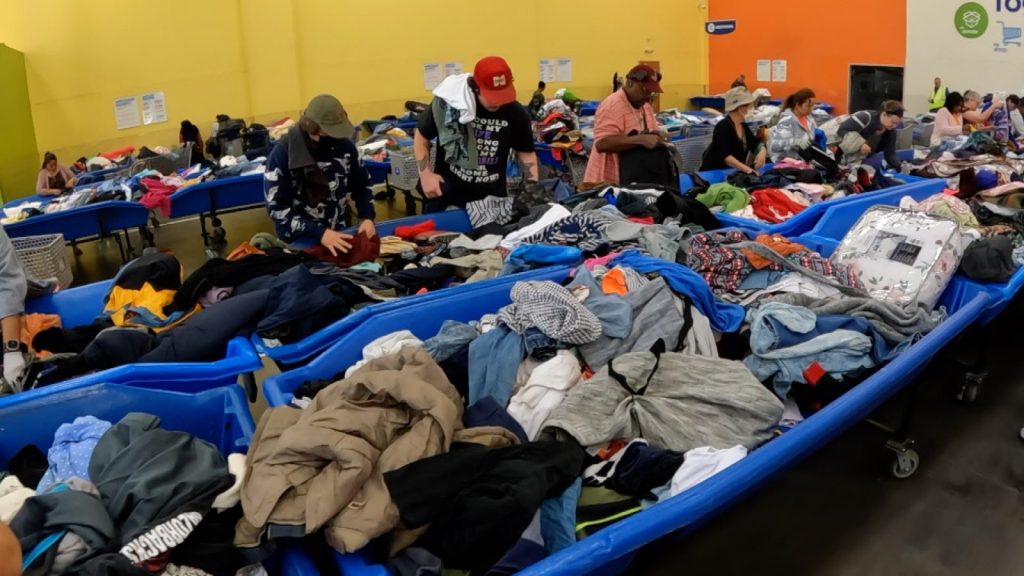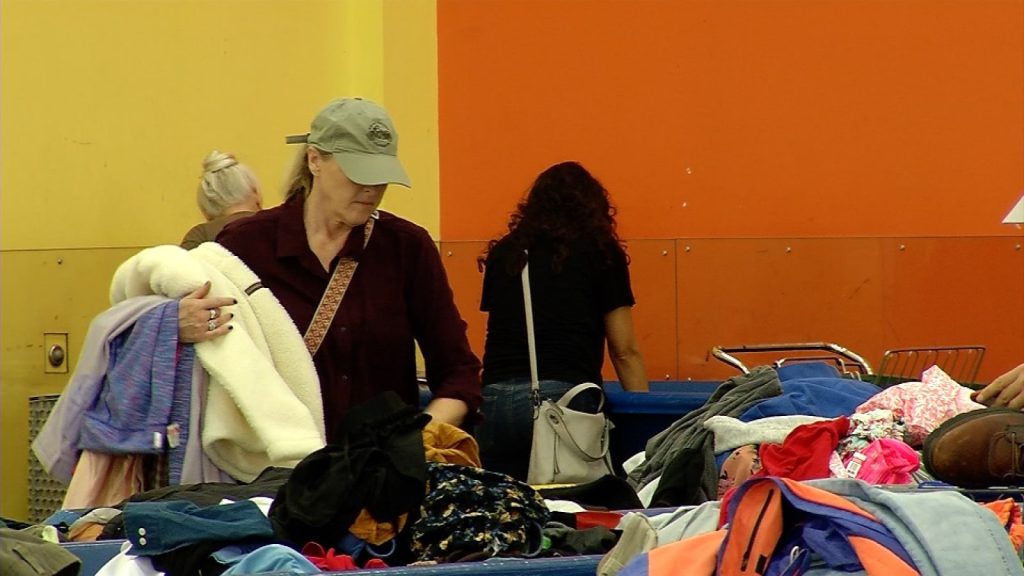Thrift Store Shoppers in Brooklyn Park Find Profit-Making Treasures
For thrifty shoppers, there is a treasure trove in Minnesota. And for those with a mind for business — a chance to profit.
After 10 days in area Goodwill stores, unsold items move to Goodwill outlets in Chaska, St. Paul and Brooklyn Park. Thrifters pay by the pound and get more out of those items than you might expect.
General Manager Ken Obondo said it’s a mad dash for the Brooklyn Park bins in the early hours.
“At 6 a.m., we will have customers lined up waiting to be first in line to get in the stores,” Obondo said.
The bins operate on a cyclical schedule. Obondo said the floor of the building holds 72 bins and a row of them rotates every 30 minutes.
There are rules for thrifters to follow: don’t start rifling through a row until every bin is in place. If you walk in at rotation time, you can see dozens of shoppers lined up, ready for their signal.
“They wait until every bin is out and then they tell you you can go,” said Megan, one of the bin shoppers. “It’s just like everybody is digging.”
Secondhand success
Megan and her friend, Lili, are two outlet regulars. They say they come here often.
“When you come here, you look like, you kind of can figure out your own style and pay nothing for it,” Megan said.

Thrifters comb through the bins in Brooklyn Park.
Megan says she often uses her sewing machine to alter her finds. On this day, she had a few options to alter, including a watercolor-print slip dress.
“This is something I’m going to sew and make it littler and fit me better,” Megan said.
Megan and Lili have perfected the hunt.
“It’s always a rush when you find something that you really like. You’re like ‘Oh, I need to keep going!'” Lili said.
The more thrifters find– the better the deal. Signage posted at the store says under 10 pounds of clothes, housewares, accessories, shoes and media cost $2.49 a pound, while 10-25 pounds of those items cost $2.29 a pound. If you manage to find more than 25 pounds of items, it costs $1.99 a pound.
“It’s always a rush when you find something and then you end up paying like 20 cents for it,” Lili said.
Megan and Lili, like many others, shop for their own closets.
Feeding the resale market
Others are on the hunt for a profit.
“Some of these customers take the whole day just shopping. It’s a full time job for them,” Obondo said.
The resale market is lucrative. Some sellers share their finds on Instagram, or post directly to eBay or clothing resale websites like Poshmark.
Goodwill even has its own online marketplace.
Kathryn Haugrud is one of the Minnesota thrifters making a living secondhand. She was a teacher for more than 20 years until the pandemic, but now makes a living off of her online business.

Kathryn Haugrud said she looks for quality brands, fabrics and things that she knows would sell in her store.
“I niched down to what I knew the most and could sell the best,” Haugrud said. “If you learn it and you do it right, and you follow the rules… then yes, you can make a living.”
She lives in northern Minnesota, but makes her way down to Brooklyn Park’s bins once a month. She also searches stores close to home.
After she makes her purchases, she cleans them, prices them and lists them online.
“I list so many items every day, I ship so many items every day,” Haugrud said.
Haugrud’s shop focuses on men’s and women’s clothing and vintage jewelry. She typically digs in the bins for desirable fabrics and brands.
“You just dig and it is amazing what you can find,” Haugrud said. “Yesterday, I found a full-length cashmere men’s overcoat.”
For planet and people
Obondo said these thrifters and resellers help Goodwill in a big way.
“In a year, we save about 65 million pounds that need to go in a landfill because we are picking through, making sure we can salvage as much as we can,” Obondo said.
It gives a new life to treasures left behind, and Obondo said it also makes a difference for Goodwill’s employees.
The profits also help connect people to jobs in the area.
Related: Crystal Thrift Store Sees Surge in Secondhand Shoppers


